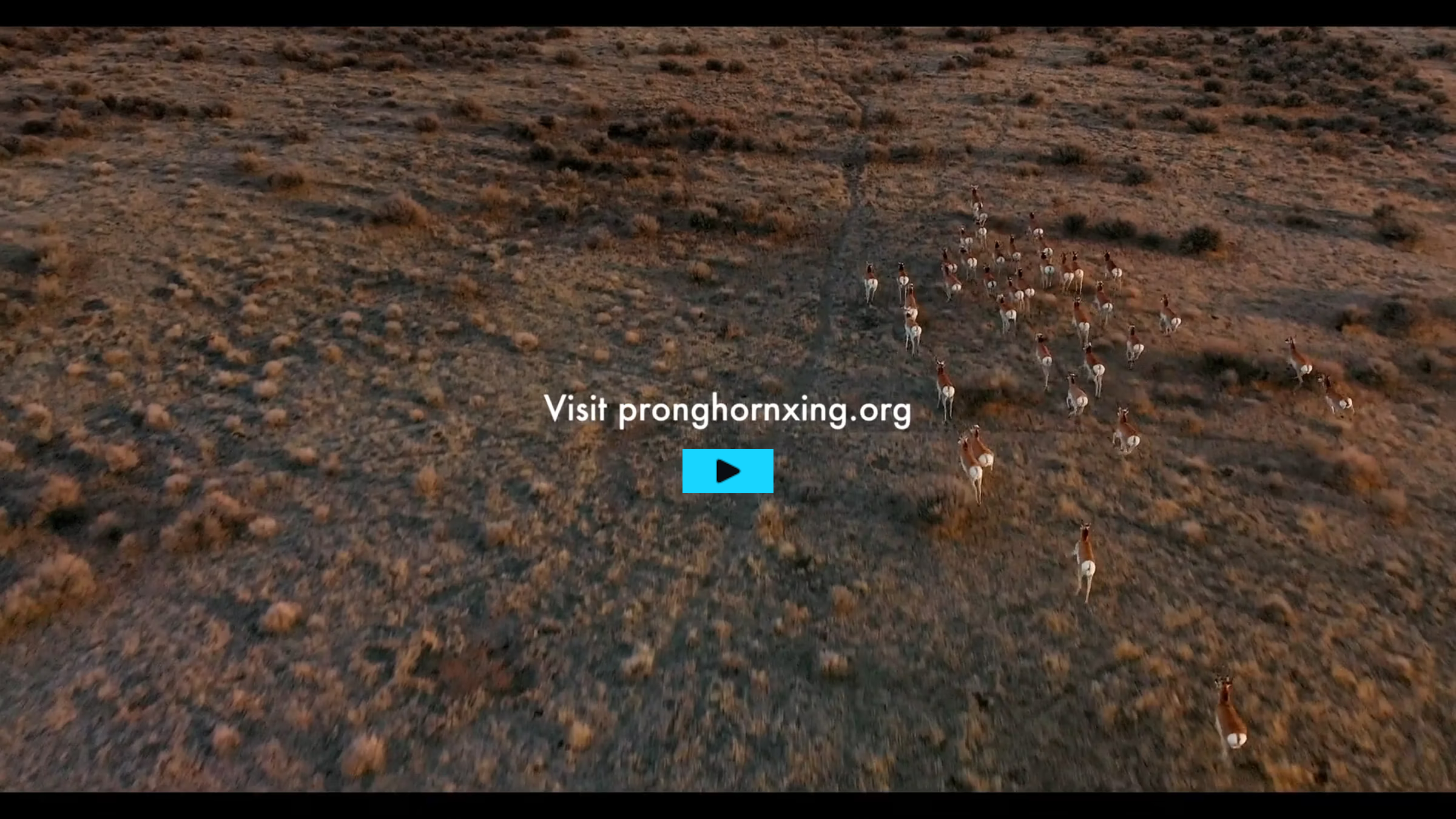About

The Pronghorn Xing project is a collaborative initiative aimed at enhancing ecological connectivity across the Northern Sagebrush Steppe (NSS) in Alberta and Saskatchewan to both protect pronghorn and other grassland species and deliver regional wildlife conservation and public safety.
There are four key messages we wish to convey:
- Grasslands are among Canada's most threatened ecosystems due to conversion to agriculture, residential, and industrial development. Grassland species, such as pronghorn, are particularly affected by barriers to movement such as highways, railways, and fences.
- Highways threaten wildlife populations by direct mortality from collisions with vehicles or as barriers reducing access to food, water, or mates.
- We are concerned about the Trans-Canada Highway between Brooks, AB and Swift Current, SK. There are proven solutions to reduce animal vehicle collisions and enable safe movement of wildlife across highways through building crossing structures and fencing.
- We are recommending a road crossing mitigation system along the Trans-Canada Highway to both protect grassland species and deliver regional wildlife conservation and public safety.
Understanding the Challenge
Pronghorn are native to North America's grasslands and are known for their extensive migratory patterns. However, human-made barriers such as fences and roads have disrupted these natural movements, limiting access to essential habitats and resources. Studies have shown that pronghorn encounter fences approximately 244 times annually, with a portion of these interactions leading to altered or trapped movements. Additionally, high-traffic roads such as the Trans-Canada Highway (TCH) pose risks of vehicle collisions and pronghorn exhibit avoidance behaviour, further impeding pronghorn connectivity.
Our Approach
To tackle these issues, the Pronghorn Xing project has undertaken four scientific assessments:
- Fence impermeability prioritization: This assessment prioritizes areas in the NSS where fencing may be impeding pronghorn movement based on an analysis of pronghorn behavioural response to fences.
- High valued ecological connectivity areas: This assessment identifies areas in the Canadian portion of the NSS with high ecological connectivity value based on an overlap of different connectivity models for different grassland species. It informs conservation planning and actions to maintain or restore movement for grassland species.
- Wildlife and motorist safety road mitigation system: This assessment builds on past studies that identified potential pronghorn crossing sites along the TCH from Brooks, AB to Swift Current, SK where road mitigation would improve movement opportunities. We considered additional connectivity models for grassland species to understand where their movements intersect with the TCH. We compare road sections identified with high ecological movement needs for grassland species to road sections with high numbers of AVC and recommend a series of crossing sites to improve safe wildlife movement across the TCH and reduce motorist safety risk. We also assess if the potential pronghorn crossing sites from previous work support other grassland species movement opportunities.
- Pronghorn crossing site prioritization: This assessment builds on previous work where potential pronghorn crossing sites were identified and prioritized from Brooks, AB to Swift Current, SK (Lee et al., 2023). To refine and order the prioritized pronghorn crossing sites and assess other characteristics important to road mitigation projects such as land ownership, other anthropogenic features, and site topography, the working team visited six sites in the field. Sites were ordered for importance in Alberta and Saskatchewan to guide conservation planning and actions.
As of October 2024, Pronghorn Xing is undertaking the following additional studies:
- Pronghorn and mule deer movement tracking: using GPS collars, we will track the movement of pronghorn and mule deer over three years. This will show us where these species are interacting with the TCH, and will provide insights into present-day migratory routes.
- Biodiversity Monitoring: using remote cameras and acoustic recording units (ARUs) setup at the proposed 6 mitigation sites along the TCH, we can document other grassland species that could benefit from a road mitigation system and enhanced connectivity. This also allows us to document any species at risk at these sites.
For more detailed information and access to our comprehensive reports, please visit the What's New page.
Collaborative Efforts
The success of this project hinges on the collaboration. We are currently in the engagement phase of Pronghorn Xing, where we are working to communicate the importance of grassland connectivity and wildlife crossing infrastructure to our core audiences. If you are one of our core audiences, we would appreciate the opportunity to meet and present Pronghorn Xing to you and your staff/community. Our core audiences are:
- Federal government
- Provincial governments
- Local governments
- Indigenous Communities
- Industrial and commercial stakeholders
- Landowners
- Subject matter experts
- General public
If you are interested in a presentation to your agency or organization on Pronghorn Xing, or if you would like to learn more, or have a question please contact info@pronghornxing.org.
How to contact us?
As part of the engagement phase of Pronghorn Xing, we are working to communicate the importance of grassland connectivity and wildlife crossing infrastructure to our core audiences. If you are one of our core audiences, we would appreciate the opportunity to meet and present Pronghorn Xing to you and your staff/community. Our core audiences are:
- Federal government
- Provincial governments
- Local governments
- Indigenous Communities
- Industrial and commercial stakeholders
- Landowners
- Subject matter experts
- General public
If you are interested in a presentation to your agency or organization on Pronghorn Xing, or if you would like to learn more, or have a question please contact info@pronghornxing.org.



